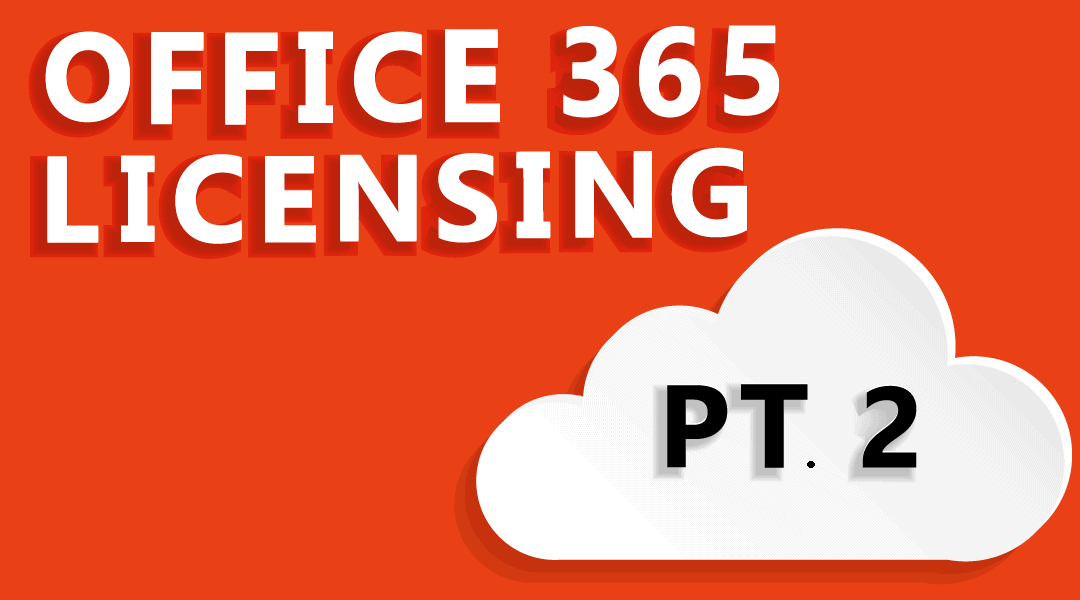
If you’re new here, start with the first installment on what Office 365 is and an overview of the licenses available.
When deciding which Office 365 license to acquire, you’ll want to weigh some decisions on features and functionality against the cost.
Office 365 Enterprise licenses can include:
- Unlimited user
- Fast Track deployment for more than 50 users
- Microsoft Planner
- Video Hosting
- eDiscovery and Advanced eDiscovery
- The E3 and E5 plan have 100Gb mailboxes.
- Use the Enterprise plans to implement Microsoft Teams as a phone system.
A brief description of each license follows.
| Office 365 Pro Plus | Office applications plus cloud file-storage and sharing. Business email not included. | Best use is for companies that still have an on-premise Exchange server or an alternative email provider. |
| Office 365 E1 | Email and access to the Office Portal and dozens of other free applications. Including the 1 Tb of OneDrive storage. Does not include desktop installations. Apps are all web based. Teams, Yammer and Stream are included. | Office user. For companies that may already have a volume license of Office. Includes Stream, which is a video streaming service and only included with the Enterprise license. |
| Office 365 E3 | Email, local install of Microsoft office, Including Access and Publisher. Full access to the Office portal and access to the additional apps listed in E1, Includes a 100 Gb mailbox, and unlimited cloud storage. | For offices that want to keep the most current version of Office available and use collaboration tools. Includes Stream, which is a video streaming service and only included with the Enterprise license. |
| Office 365 E5 | Email, local install of Microsoft office, Including Access and Publisher. Full access to the Office portal and access to the additional apps listed in E1, Includes a 100 Gb mailbox. Also includes PowerBI and unlimited cloud storage. | This is the top-level license. It includes everything that the E3 license has and new analytics software. |
Below are the most commonly used Office 365 Enterprise products:
For a much more detailed comparison of the Enterprise Plans, check out Office 365 Enterprise pricing plans.
Office 365 can now use Azure Active directory to create a hybrid environment and allow for single password sign on. This creates a hybridized environment for password synching. It does require that a Microsoft server be installed at the client site. The server can be Microsoft Server Essentials, or Microsoft Windows server 2016 or later.
What’s next? Stay tuned for the next blog in this series where we take a closer look at the Microsoft phone system, Teams.
